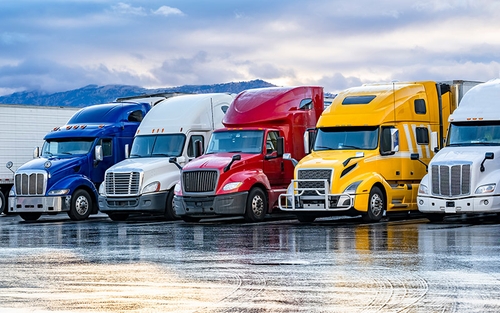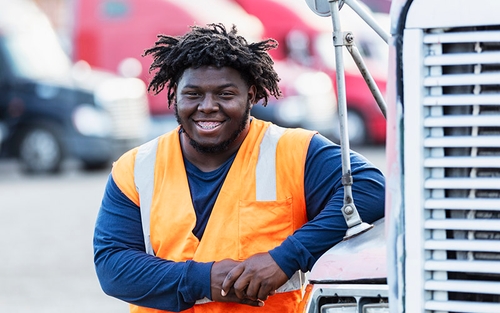CDL license classifications: Class A, B and C CDLs explained


By The Schneider Guy
Estimated reading time: 2 minutes
The most important document truck drivers have is a Commercial Driver’s License (CDL). A CDL permits drivers to operate certain Commercial Motor Vehicles (CMVs) based on the class of license they hold and what endorsements they add to it.
Knowing what sets CDLs apart can be confusing. Keep reading to learn about the types of CDL license classifications and determine which one is right for you.
What is a Class A CDL?
A Class A CDL permits you to operate any combination of vehicles with a gross vehicle weight rating (GVWR) of 26,001 pounds or more. It also allows you to haul a trailer that weighs 10,000 pounds or more.
Class A is the most popular kind of CDL. This is because it qualifies drivers for jobs with some of the highest earning potential in the industry.
Vehicles you may be able to drive with a Class A CDL include:
- Truck and trailer combinations.
- Tractor-trailer buses.
- Tanker vehicles.
- Flatbeds.
- Most Class B and C vehicles.
Some of the vehicles listed above also require endorsements, on top of a Class A CDL. Endorsements are extra qualifications drivers can get through their state’s Department of Motor Vehicles (DMV).
Endorsement options include:
- (T) Double/Triple Endorsement.
- (H) Hazardous Materials Endorsement.
- (N) Tank Vehicle Endorsement.
- (X) Tanker/HAZMAT Combo Endorsement.
To get a Class A CDL, you must be at least 18 or 21 years old (depending on which state you obtain it in). However, you must be at least 21 to drive across state lines, so getting your Class A CDL at 18 will not give you access to the full range of driving jobs.
What is a Class B CDL?
A Class B CDL permits you to operate a single vehicle with a GVWR of 26,001 pounds or more. It also allows you to haul a trailer that weighs less than 10,000 pounds.
This license is ideal for those who want to drive a commercial vehicle but stay close to home. Class B CDL jobs can also be great opportunities for those not old enough to travel between states.
Vehicles you may be able to drive with a Class B CDL include:
- Straight trucks.
- Large buses (city, school and tour).
- Segmented buses.
- Box trucks.
- Garbage trucks.
- Cement trucks.
- Dump trucks with small trailers.
- Some Class C vehicles.
On top of a Class B CDL, some of these vehicles require endorsements to operate, including:
- (P) Passenger Transport Endorsement.
- (S) School Bus/Passenger Transport Combo Endorsement.
To get a Class B CDL, you also must be at least 18 years old. Unlike those with a Class A CDL, Class B CDL holders are only allowed to drive in the state they obtained their license in.
What is a Class C CDL?
A Class C CDL allows you to operate a single or combination vehicle that does not meet the definition of Class A or B, but is designed to either:
- Transport 16 or more passengers (including the driver).
- Transport hazardous materials in quantities requiring placarding.
This type of CDL is common for those who drive small buses or shuttles. In many cases, a Class C CDL will be paired with a HazMat, Passenger or School Bus endorsement.
While a Class C CDL is more limited in the size and weight of the vehicles you can operate, there are still a variety of options to choose from:
- Small passenger vans and buses (less than 26,001 pounds).
- Combination vehicles not covered by Class A or B CDLs.
- Small HazMat vehicles.
To get a Class C CDL, you must be at least 18 years old. Unlike with Class A and B CDLs, you do not have to complete Entry Level Driving Training (ELDT) to get a Class C CDL. That said, you need to complete ELDT to obtain a HazMat, Passenger or School Bus endorsement.
Class A vs Class B vs Class C CDL – Which license is the best?
There is no clear answer to which class of CDL is the best because each offers unique benefits and opportunities. Ultimately, it comes down to what kind of driver you want to become.
Many times, the decision comes down to picking between a Class A and Class B CDL. If you’re deciding whether to get a Class A or Class B license, consider the following:
Advantages of a Class A CDL:
- Higher earning potential, typically.
- Greater variety of job opportunities.
- The opportunity to travel longer distances.
Advantages of a Class B CDL:
- Good introduction to the industry (especially for those under 21).
- Less expensive to get than a Class A CDL.
- Drivers often get home every night.
Ready to get your CDL?

Schneider Guy loves the "Big Orange." He's passionate about the trucking industry and connecting people to rewarding careers within it. He's been the eyes and ears of our company since our founding in 1935, and he's excited to interact with prospective and current Schneider associates through "A Slice of Orange."



